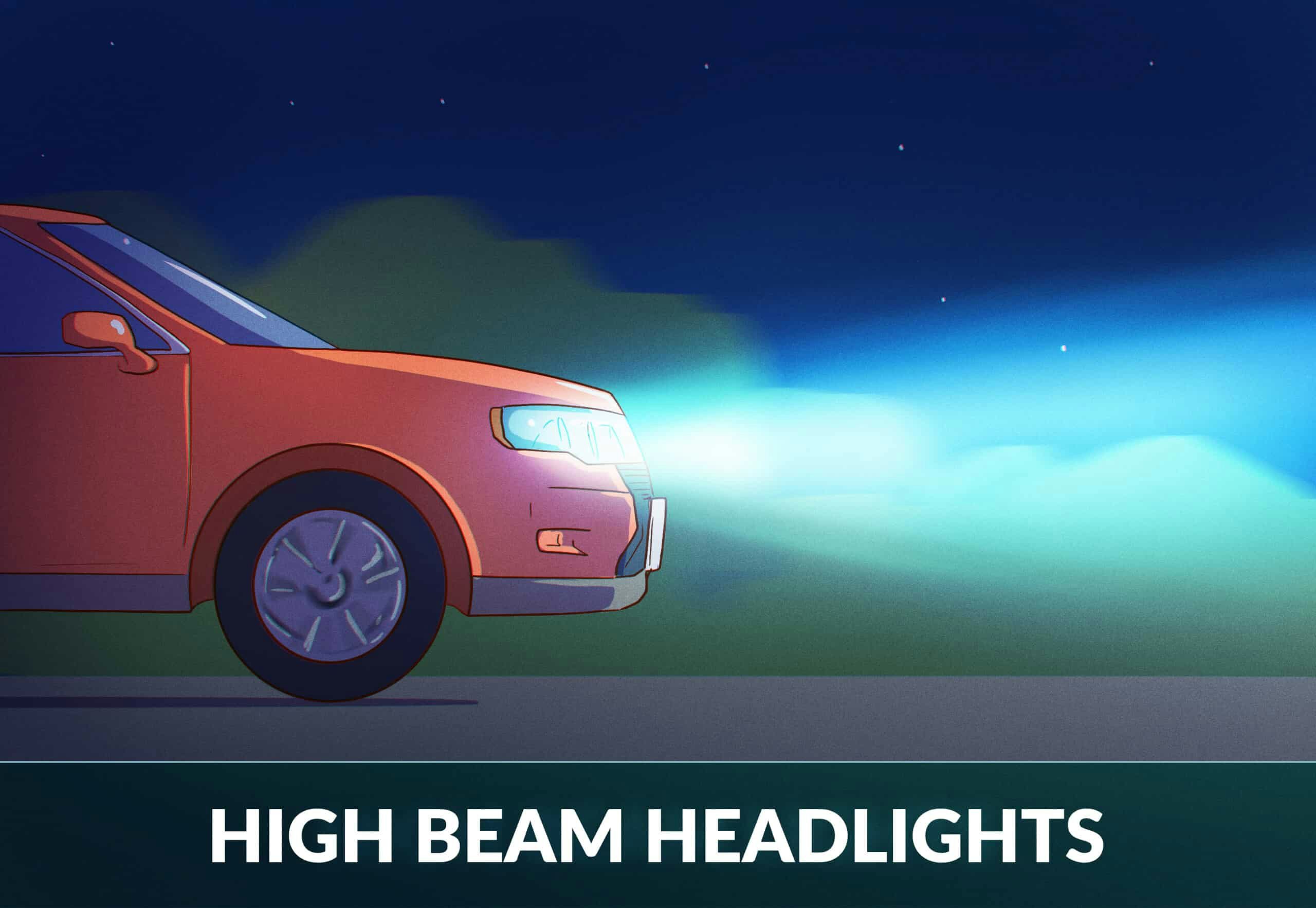
When to Use Your Car’s High-Beam Headlights: A Complete Guide
In this guide, we’ll cover everything you need to know about high-beam headlights and when to use them.
If you prefer video, check out this thorough video from our Youtube channel:
What are High Beam Headlights?
The strongest headlights in your car are called high beam headlights. The high beam headlights are used at night and in poor lighting conditions to light up as much of the road ahead as possible as you drive. They light up far more of the road compared to normal low-beam “dipped” headlights.
Tip: You must be able to stop within the distance of your lights, or it will be too late to stop without hitting an object by the time you see it.
While high beam headlights provide more light than low beams, the light is strong enough to temporarily blind other drivers and pedestrians if used incorrectly. To prevent blinding other drivers, all states have specific requirements that regulate when you may use high beams and when to dip or switch them off (i.e. turn to low beams).
When to Use High Beam Headlights
High beams light up far more of the road than low beams and enable you to see much farther ahead when dark. They drastically increase the chance of you seeing an object or hazard on or near the road.
We’ll go through when you may legally use high beams below.
1 – In urban areas with low visibility
Even within urban areas, the roads can be dark with low visibility. You can use high beams to see further ahead if you are driving in an urban area without street lighting. Using high beams in those situations will make the roads safer for pedestrians and bicyclists on or near the road.
Be prepared to dip your headlights to avoid blinding other drivers.
2 – On interstate highways, country roads, and rural areas

On any country roads or rural areas with sparse street lighting, you should use high beams as often as you can. They will allow you to drive much safer and with more confidence. The additional light will allow you to see animals on or close to the road and, more importantly, pedestrians and bicyclists walking on the edge of the road.
3 – On interstate highways
Use high beams when suitable on interstate highways but be prepared to dim when necessary to avoid blinding other drivers.
How Do You Activate Your High Beams?
- To activate your high beams, first locate your blinker lever. Then push it away from you until you feel it click into place. If you’ve done it correctly, the high beam dashboard light should be visible on your car’s dashboard.
- To turn off your high beams, pull the lever towards you.
When Should You Dip Your High Beams?
As high-beam headlights can also blind other drivers, you need to dip your them before you risk blinding other drivers. The exact distance to other vehicles will vary from state to state.
In general, high beam headlights must not be used within:
- 300 feet or less when driving behind another vehicle
- 500 feet of an oncoming vehicle


What Should You Do If You Get Blinded by Another Driver?
Oncoming drivers sometimes forget to dip their high-beam headlights when passing. To avoid being blinded, you can look toward the right edge of your lane and watch the position of the oncoming vehicle out of the corner of the eye.
How Far Will High Beams and Low Beams Let You See?
- Low-beam headlights let you see up to about 200 feet and are suitable for speeds up to 25 mph.
- High-beam headlights let you see up to about 350 feet and are suitable for speeds faster than 25 mph.
Don’t Overdrive Your Headlights
As you must be able to stop within the distance of your lights, high beams are often used when driving faster than 25 mph in low-visibility conditions. If driving faster than 25 mph with low-beam headlights, it may be too late to stop without hitting an object by the time you see it.

Don’t drive too fast at night as your stopping distance may be longer than your visibility!

550+ exam-like questions
All you need to ace your test
Perfect for first-timers, renewals and senior citizens
Recommended articles
Ace your DMV test, guaranteed
Want to Be the Top School in Your Area?
- Simple & automated admin
- More time for teaching
- #1 learning materials for students


